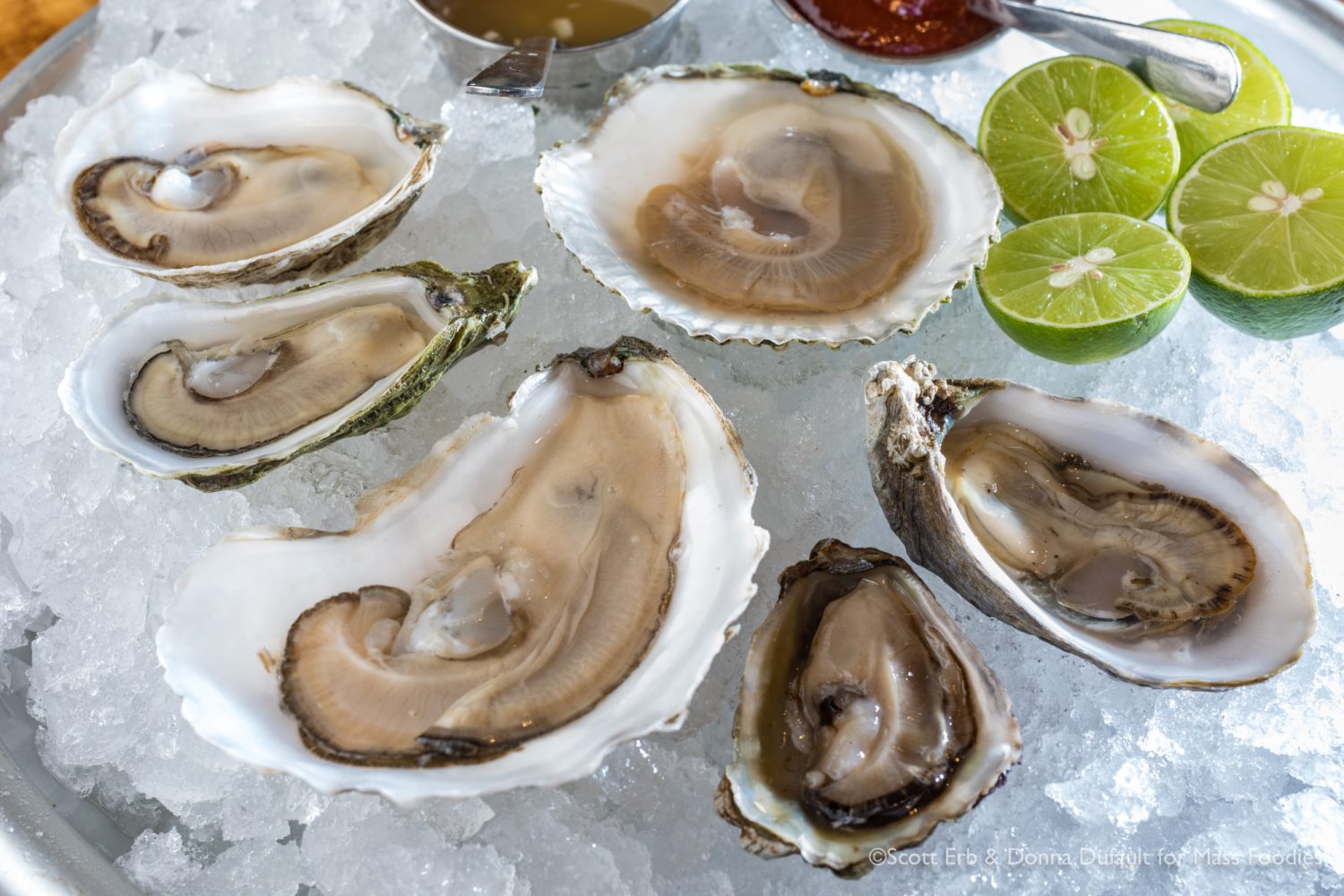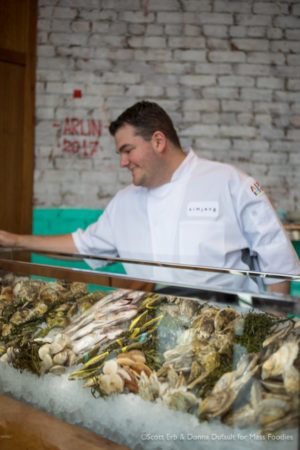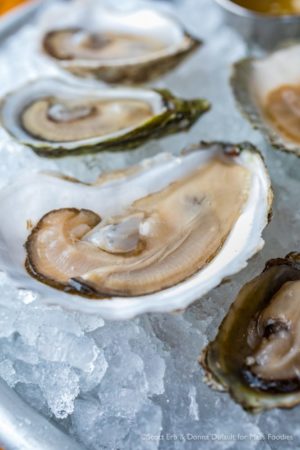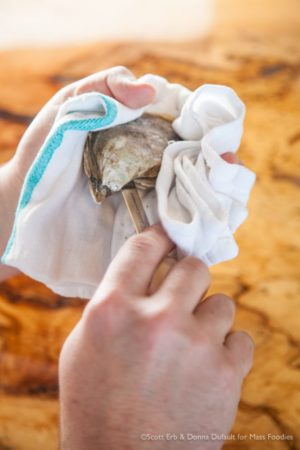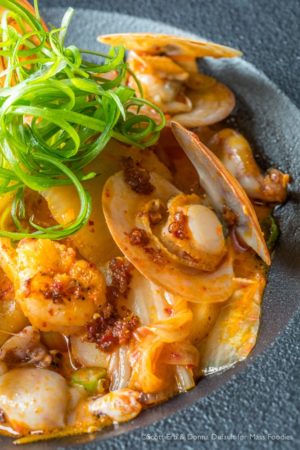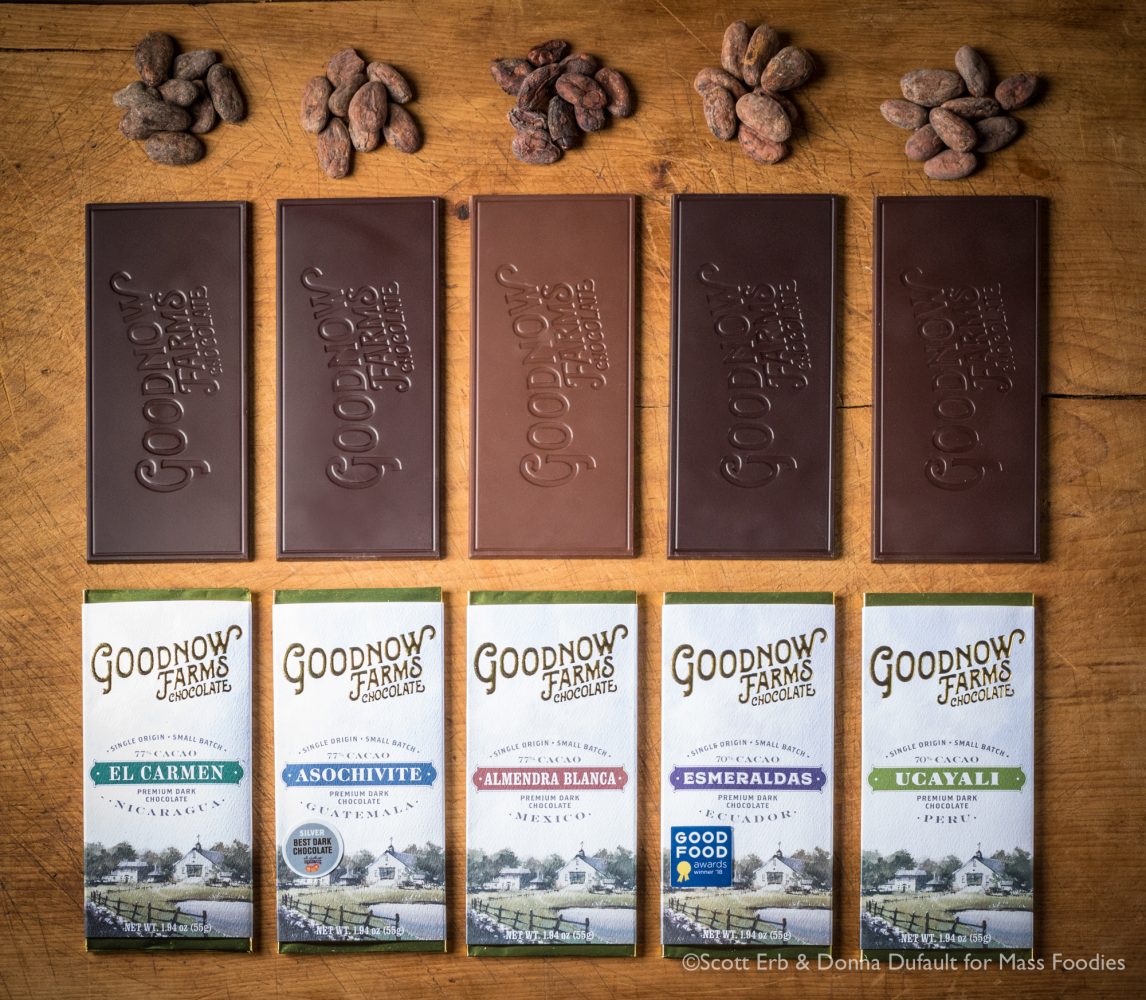
In 2013, I had the pleasure of helping Michelle Miller of CBS News find her yummy. Don’t bother calling my wife, she knows. In fact, my wife watched. I had spent the previous two years helping her find her yummy and she was happy to share me with Michelle. Millions of others watched too. I don’t know if I touched all those people so they found their yummies too. But I tried, because I know of no more universal pleasure than what I offered: Chocolate. Beautiful, fine flavor chocolate. (Miller was covering the NYC Chocolate Show, and I was her guide.)
And here is a yummy truth I could not have conceived of in 2013: There is deep delicious, take-a-bite-and-you’ll-block-out-the-world craft chocolate being made in . . . Sudbury, MA. Yes, Sudbury. By Tom and Monica Rogan on a centuries-old farm they own on Goodnow Road – a place that gives the chocolate its name: Goodnow Farm. Which sounds lovely but is a completely inappropriate name for their chocolate. Because Goodnow chocolate is so much better than good – just eighteen months into its existence it’s excellent.
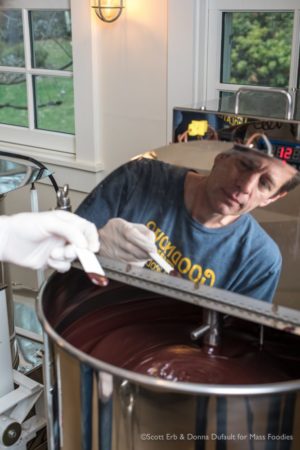
Why Craft Chocolate
Let’s get a few things out of the way first: Craft chocolate, processed exclusively from a few ingredients that grow in the ground not in a lab, is a food distinct from candy. (I love a Hershey with Almonds now and then but what the heck is PGPR or polyglycerol polyricinoleate and why is it in my candy bar?)
It takes several time consuming and labor intensive steps to get the main source for that food – cocoa beans or the fruit of the cacao tree – to Goodnow Road: cutting down pods from trees in often remote locales in countries like Nicaragua, Peru, Ecuador, and Mexico; splitting them open by hand and scooping out the beans and the sticky sweet pulp that surrounds them; and transporting the wet beans to somewhere they can be fermented for up to seven days and dried for several more before being bagged and shipped thousands of miles away to Sudbury.

Tom and Monica know all the farmers in those locations and directly source their beans from them. (It’s worth mentioning in our fractious political world that not one of those farmers is putting anyone in America out of job: Only a very small amount of cacao beans come from the United States – Hawaii and Puerto Rico – as the trees bear fruit only 20 degrees north and south of the equator.) Once the Rogans receive the bags of beans, they hand sort them into containers before roasting, winnowing (meaning separating the cocoa nib from the husk of the bean), and grinding the nibs, combining them with sugar, cocoa butter, and other natural ingredients like nuts. All of that needs to happen before the molding, tempering and hand wrapping of the bars.
Every step in this chocolate production is calibrated to bring out the distinctive flavor of each bean. And every bit of the cocoa that goes into those small batch bars (up to 2000 are produced a week) comes from a single origin such as Ucayali in Peru or El Carmen in Nicaragua. Even the fresh pressed cocoa butter that makes the bars super smooth and creamy is single origin from the same beans – something only a few craft chocolate makers are doing today.
And … And … You’ve started to glaze over haven’t you?
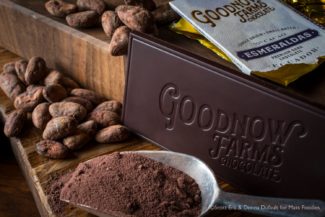
See, this is the problem trying to explain the deliciousness of craft chocolate without eating some at the same time. (Why aren’t you? You need an excuse to eat chocolate?) But even if you ARE eating some, chances are my words sound like “blah blah blah” after a while. Way to go, Jim, you just made chocolate boring, which I believe is an evil just south of clubbing a baby seal.
So let’s just get to it: You should not eat a particular Goodnow or any craft chocolate bar just because of the painstaking process of its production. Tune out the people who say the BEST chocolate is x or y or z or who tell you that you must savor every pretentious nibble like you are auditioning for a Grey Poupon commercial. How do they know what you’ll love? Ignore anyone who insists that you understand the genetics until you have an idea of the flavors you love. Don’t worry about labels like organic – most fine flavor cacao is de facto organic; many small farmers just can’t afford the certification process. Understand fair trade is by and large a marketing ploy that pales to “direct trade,” which puts more money into the pockets of farmers and helps ensure quality and value in the whole food chain. Finally, please, please, please tell the people who say they eat only 70% chocolate bars as if that is some indication of quality to get over themselves. Percentage is no indication of quality. 70% of overroasted bitter cocoa loaded with vanilla and lecithin and other stuff indicates there is more cocoa than the 11% cocoa mass in a Hershey Bar. But 70% of crap is still crap.
No, you should eat Goodnow craft chocolate because it’s yummy. Really, really yummy.
You should eat it because it will make you feel happy – even cheerful – no matter what else is happening in the world. Follow the flavors that please you. That’s what Tom and Monica did, and it led to this second career for the two of them – a shared partnership in chocolate and parenting that is as symbiotic as cocoa and sugar.
The Origin of Goodnow’s Origin Bars

It started several years ago in Los Angeles when Tom sold his TV production company (Best Thing I Ever Ate, Ace of Cakes) and Monica moved on from a successful real estate career. They wanted to find a business they could start together. They “discovered” it in a vintage furniture store in Santa Monica and its refrigerator of tasty homemade chocolate. Neither of them realized this was even possible. When the store went out of business, the chocolate lived on at a kiosk in Venice, a two-hour round trip the couple happily made. But after one too many trips only to find the store closed, Tom and Monica decided to try their hands at making chocolate themselves. They watched videos online, bought beans and a blade coffee grinder, sugar, and a mortar and pestle. Soon they started figuring out which beans had what flavors and learned about sourcing and equitable farming.
Friends kept saying they should sell what they were making, and they thought craft chocolate could be their second calling. “We lived in LA and the food and flavors to explore there were amazing,” says Tom. “The thought of being able to do that with chocolate was exciting.” They knew they wanted to raise their kids in Massachusetts – where Tom is from and Monica spent summers as a kid – so they went for it. Adds Monica, “We’re a husband and wife who had kids and wanted to do something fun for our next career together and have good lifestyle. We wanted a business we could enjoy and which allowed us to be creative and engage the community. What more do you need?”
In other words, they found their yummy and kept on chasing it.
Now, You Do the Same
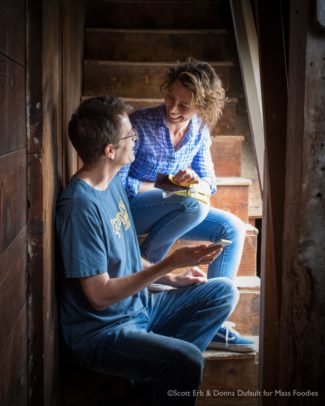
Find your yummy in a world of flavor that many of us never knew existed in chocolate. The chocolate produced at Goodnow Farms may be exclusively dark chocolate, meaning it contains no dairy, but if you have never had a craft chocolate bar, forget about the idea of dark chocolate or any high percentage chocolate being bitter or dry. Don’t let past yucks affect your yum. The added fat from the single origin cocoa butter really helps the mouth feel and accentuates the bars’ flavors. As Monica says, “There is no singular way to do chocolate. Each one is different. We need to celebrate that variety.”
But before I get into blah blah territory again remember what Tom says: “This is accessible if you appreciate it as something fun that’s meant to be enjoyed. Whether you take small bites of eat the whole bar in one sitting you’ll still taste the difference.”
Where you start is up to you: ask yourself what flavors you like. Or just try two or three and figure it out.
The earthy El Carmen from Nicaragua is probably the “gateway” chocolate at Goodnow, and the one with coffee is an exercise in complementary flavor perfection. Esmeraldas from Ecuador is easy to love too: A 2018 Good Food Award winner, its berry and jam flavors are deep and long, accentuated by the fresh pressed cocoa butter that comes from the beans. Or maybe the Ucayali from Peru: “When we started making chocolate, Ucayali was what I though the ultimate craft chocolate bar would taste like,” says Tom. “It’s fresh, herbal and aromatic – a good connection to the bean.”
If your idea of a party in your mouth is stronger and bigger? Dive right into Monica’s favorite: Asochivite from Guatemala, intensely fruity with a long finish created from beans Goodnow helped elevate by providing funds for the villagers to build a new fermentary and drying decks. The lightness of the color of Mexican Almendra Blanca (which translates to “white almond”) belies its power and distinctive flavor. And for the biggest, boldest, deepest punch of complex flavor? Nicalizo from Nicaragua is what you want.
You may initially blanch at the idea playing $8 for each Goodnow bar (which is on the low to mid end price range for craft chocolate bars on this level). But given the amount of work behind them and sheer pleasure they offer, consider it an affordable luxury like wine and beer or even artisan bread. Think of what you’re willing to pay for the best of those things, not what you spent for a candy bar as a kid, and you’ll happily give yourself over to the power of great craft chocolate.
“Craft chocolate is an art, but it’s also an expression,” says Monica. “It can bring people together. We need to create community to grow together. There is a world of flavor out there with chocolate that is very similar to wine. The joy in this is discovering all these different flavors and where they come from. Complexity is a great thing. Nuance is a great thing. Flavor is a great thing. Taste is a great thing. Love is a great thing.”
Craft chocolate at its best is all these things. Yum!
A Closer Look With Erb Photography
[huge_it_gallery id=”10″]

